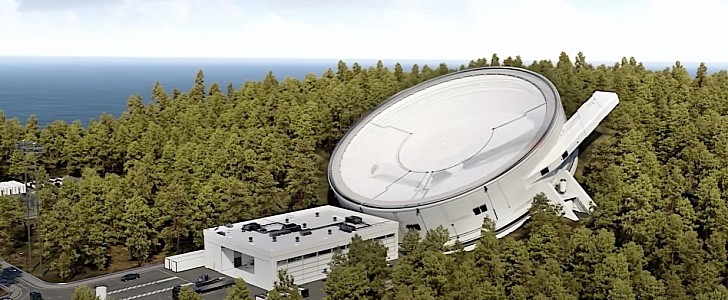The Long Beach-based company that made waves last year with the truly groundbreaking concept of a giant centrifugal slingshot that can launch things into orbit has now reached another milestone. NASA is gearing up to test and confirm the amazing potential of this ingenious contraption for hypersonic launches.
One of the accelerated trends in the space industry has to do with satellite launches. Low Earth Orbit (LEO) constellations of small satellites for a wide range of missions, from national security to weather and climate monitoring, have become a regular thing and continue to expand. At the same time, we all know that space launches aren’t cheap.
But what if there was a way to deliver such payloads into orbit by saving almost 70% of the fuel typically required by rockets and ditching the complex structures associated with them?
This is not just an idea but a real goal embodied by the Suborbital Accelerator Launch System developed by SpinLaunch. Basically an enormous slingshot, this machine uses an accelerator to spin the launch vehicle inside a special chamber until it reaches the optimal speed, after which it releases it through a launch tube.
It was only a matter of time until NASA expressed its interest in this apparently-crazy idea. The two have just signed a Space Act Agreement as part of NASA’s Flight Opportunities Program. SpinLaunch agreed to “develop, integrate, and fly” a NASA payload using its unique launch system for testing purposes only.
The company's future Orbital Accelerator will be able to “spin” a launch vehicle containing a satellite up to 5,000 mph (8,000 kph). This will be achieved in the system’s steel vacuum chamber with a diameter of 300 feet (91.4 meters) with the help of a rotating arm made of carbon fiber. When reaching the stratosphere, the propulsive stage (which will be small and inexpensive) will reach the required speed for the satellite delivery.
The NASA test is set to be conducted by the end of this year and can be seen as the culmination of the several suborbital launch tests that SpinLaunch has completed since October 2021. The first orbital test launch is scheduled for 2026.
But what if there was a way to deliver such payloads into orbit by saving almost 70% of the fuel typically required by rockets and ditching the complex structures associated with them?
This is not just an idea but a real goal embodied by the Suborbital Accelerator Launch System developed by SpinLaunch. Basically an enormous slingshot, this machine uses an accelerator to spin the launch vehicle inside a special chamber until it reaches the optimal speed, after which it releases it through a launch tube.
It was only a matter of time until NASA expressed its interest in this apparently-crazy idea. The two have just signed a Space Act Agreement as part of NASA’s Flight Opportunities Program. SpinLaunch agreed to “develop, integrate, and fly” a NASA payload using its unique launch system for testing purposes only.
The company's future Orbital Accelerator will be able to “spin” a launch vehicle containing a satellite up to 5,000 mph (8,000 kph). This will be achieved in the system’s steel vacuum chamber with a diameter of 300 feet (91.4 meters) with the help of a rotating arm made of carbon fiber. When reaching the stratosphere, the propulsive stage (which will be small and inexpensive) will reach the required speed for the satellite delivery.
The NASA test is set to be conducted by the end of this year and can be seen as the culmination of the several suborbital launch tests that SpinLaunch has completed since October 2021. The first orbital test launch is scheduled for 2026.







